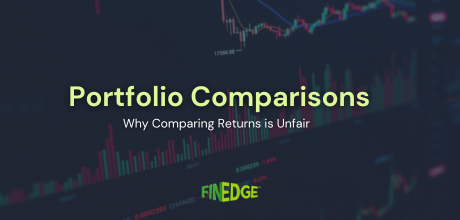Three Things That Could Surprisingly Affect Your Debt Mutual Fund Returns

The 95 Lakh Crore Fixed-Deposit base in India is witnessing an exodus these days. With key FD rates falling to near 6 per cent levels, more investors are turning to debt mutual fund investments to park their low risk funds.
The 95 Lakh Crore Fixed-Deposit base in India is witnessing an exodus these days. With key FD rates falling to near 6 per cent levels, more investors are turning to debt mutual fund investments to park their low risk funds.
Anecdotal evidence points to the fact that many these first-time debt mutual fund investors are investing their money with the expectation that these mutual fund investments are risk-free in nature, and will provide them with a guaranteed rate of return. However, this is not the case. In fact, a multitude of global and local factors may influence your debt mutual fund investment returns in 2018. Here, we try to simplify three of them for your benefit.
Oil Prices
Global crude prices have been rising since July, from $43 per barrel to nearly $60 per barrel as it stands these days. If crude prices continue to rise, they could bring down returns from your debt funds, particularly the ones that invest into long term bonds. How and why does this happen? India imports a large portion of its crude oil requirements, and a rise in crude could result in an increase in a higher fiscal deficit, as well as higher inflation – since crude oil is a major input cost for many industries (think of how diesel prices will impact logistics costs). Both these scenarios could impact bond yields and bring down bond prices. Conversely, if oil prices start falling in 2018, bond prices would be positively impacted.
US Fed Rates
The US recently decided it was time to start increasing its interest rates, keeping the delicate balance between their corporate growth and their inflation numbers in mind. Earlier, the US had followed an unconventional policy of ‘quantitative easing’, under which they essentially printed money to buy bonds, and infuse liquidity into the market – to fuel private spending. If the Fed continues to reverse this trend and increase their key interest rates in 2018, we may see a flight of capital from the Indian bond markets as US bonds will become attractive. This could bring down bond prices.
Corporate Earnings
There are some debt mutual funds that specifically invest into corporate bonds, or bonds issued by private and PSU companies (not the government). These funds usually go by the name ‘corporate bond fund’ or ‘credit opportunities fund’. They benefit when the bonds held in their portfolios undergo upgrades by rating agencies – for instance, if a bond that was rated AA at the time of buying it gets re-rated to AAA, its price will rise, and vice versa. If corporate earnings are to go up in 2018 after three consecutive years of muted growth (as many analysts are currently predicting), the NAV’s of corporate bond funds may go up. Conversely, if corporate earnings fall and rating downgrades begin to take place, we may see yields from corporate bonds going up – bringing down bond prices and the NAV’s of corporate bond-oriented mutual funds as a result.
Your Investing Experts
Relevant Articles
Why Comparing Investment Returns Can Be Misleading
At some point, most investors have compared their investment returns with a friend, a colleague, or a number they saw online and wondered why their outcomes looked different. While this instinct is natural, return comparisons are often incomplete and, in many cases, misleading. Understanding why returns differ is far more important than comparing the numbers themselves.
CAGR vs XIRR vs Absolute Return: Understanding Which Return Really Matters
When reviewing investment performance, investors often come across multiple return figures absolute return, CAGR, and XIRR. While these numbers may appear similar, they measure performance very differently. Understanding what each metric represents, and when to use it, is essential for making informed investment decisions and setting realistic expectations.
Responsible Credit Card Usage: Three Principles Every Consumer Should Follow
Credit cards are powerful financial tools when used correctly, offering convenience, rewards, and short-term liquidity. But when used without discipline, they can quickly turn into high-interest liabilities. Understanding a few essential principles can help you manage your cards responsibly, maintain a strong credit score, and avoid stress caused by compounding debt.
.png)

.png)
.png)